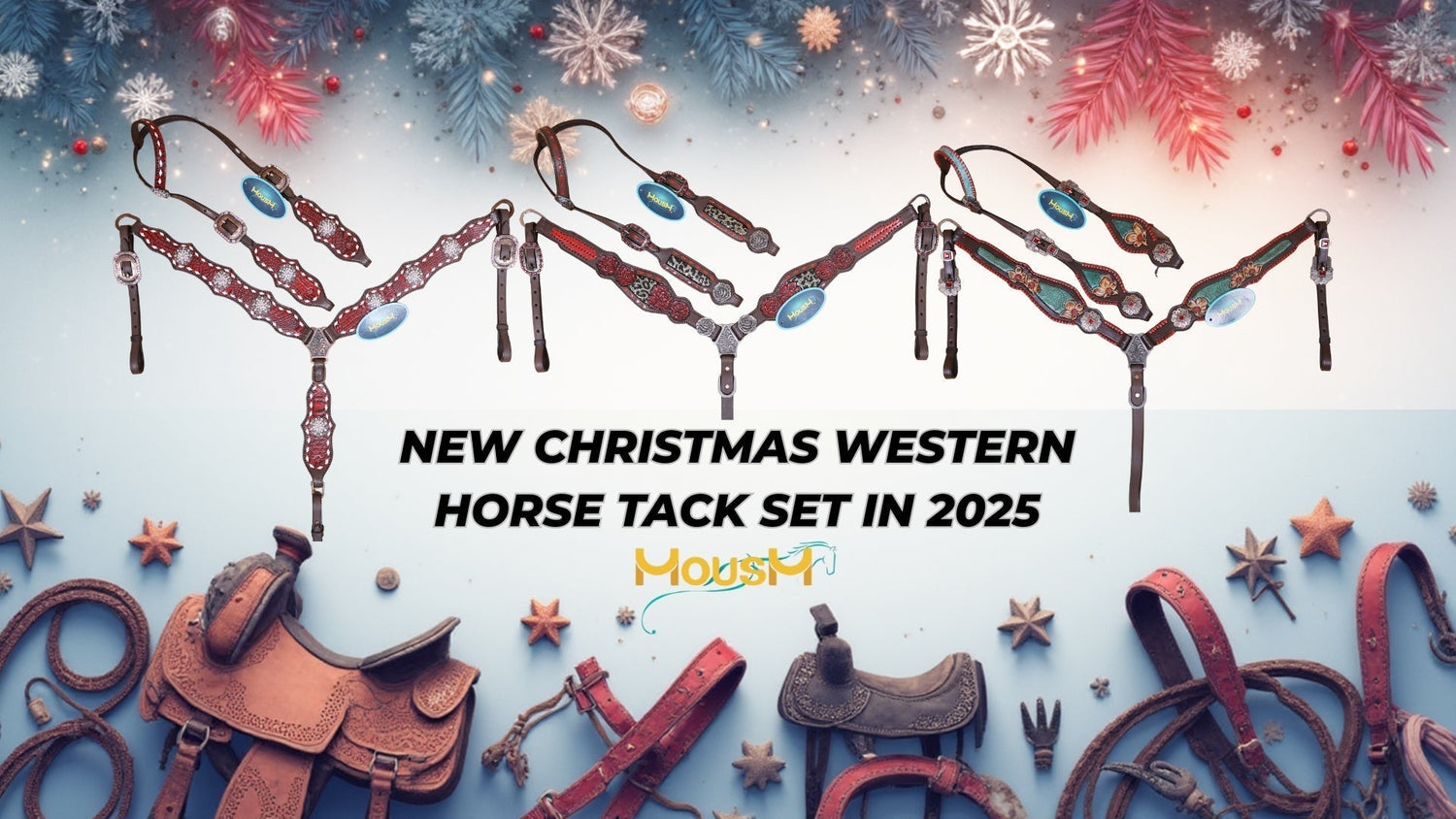Is It Time to Replace Your Horse Tack? 5 Warning Signs You Shouldn’t Ignore
As an equestrian, your tack is one of the most critical components of your daily ride. It doesn’t just help you stay connected to your horse—it ensures safety, comfort, and performance for both of you. A well-maintained tack set supports proper communication, keeps your horse at ease, and minimizes the risk of accidents. But like anything else, tack won’t last forever. Over time, daily use, weather exposure, sweat, and wear all start to take a toll. Even the highest quality leather or synthetic gear has a lifespan.
So, how do you know when it's time to retire your current tack and invest in a replacement?
Sometimes the signs are subtle, but ignoring them can lead to discomfort for your horse, poor riding experiences, or even serious accidents. To help you make informed choices, here are five clear signs your tack might be on its last leg—and why replacing it may be the best (and safest) decision.

1. Visible Damage to Leather or Material
Let’s start with the most obvious sign—visible wear and tear.
If you notice cracks, deep scratches, fraying, or stretching in your leather bridles, saddles, or reins, it’s time to take that seriously. Leather, while durable, is still an organic material. With daily exposure to sweat, moisture, dirt, and UV rays, it naturally begins to break down. What starts as a small crack in a stirrup leather or rein can rapidly become a major weak point that fails mid-ride.
This isn’t just about appearances. Tack that’s structurally compromised won’t offer the same level of support, and it certainly won’t keep you or your horse safe. Torn girths, worn reins, or dried-out saddle leather aren’t just frustrating—they’re potential hazards.
It’s also important to regularly inspect synthetic tack, which can fray or warp over time. If anything looks compromised, trust your gut—it’s probably time for a replacement.
Tip: Always clean your tack after every ride and condition your leather regularly to extend its life. But once the material is cracked beyond repair or feels weak to the touch, it’s time to let it go

2. Loose Stitching or Rivets
The integrity of your tack depends just as much on its construction as the material it’s made from.
If you spot loose stitching, unraveling threads, or missing/failing rivets, treat it as a red flag. These tiny components are holding critical parts of your gear together—reins, billets, cheek pieces, and girths. Once stitching starts coming undone, or rivets are popping out or rusted through, your tack can quickly fall apart at the worst possible moment.
This is especially important with saddles. Loose stitching along the billets or stirrup bars can compromise your balance and safety while riding. For bridles, reins, or breast collars, weak points can result in loss of control over your horse.
Don’t ignore the small stuff—it’s often a sign of bigger failure on the horizon.
Tip: If the rest of the leather is still solid, a saddler may be able to re-stitch or replace certain rivets—but this must be done before the damage spreads. If the tack is aging across multiple areas, replacement is usually the smarter route.

3. Worn-Out Padding or Cushions
Let’s talk about comfort for your horse.
Over time, your saddle’s internal components—especially the padding in the panels, knee rolls, or seat—can flatten out or become uneven. This causes hot spots, soreness, or pressure points on your horse’s back. When padding wears out, your saddle no longer distributes weight evenly, which is a recipe for discomfort and, eventually, injury.
Similarly, billets that have become stretched, thinned, or have elongated holes may not hold your girth securely. This can lead to instability during your ride or sudden shifts that can spook your horse.
If you’re noticing your horse twitching, resisting saddling, dipping their back, or showing signs of pain after riding, don’t ignore it—your saddle could be the culprit.
Bottom line? If the saddle’s padding is beyond refitting or your horse is regularly uncomfortable—even after adjustments—it’s time to retire that gear.

4. Squeaky or Stiff Buckles, Straps, and Hardware
Hardware is often overlooked, but it plays a huge role in the safety and functionality of your tack. Over time, exposure to sweat, dirt, rain, and even air humidity can cause your buckles, D-rings, snaps, and bits to rust or become stiff. Squeaky hardware might not seem like a big deal, but it’s a sign that parts are rubbing, not moving freely, or even breaking down.
Stiff buckles can become difficult to adjust during your ride or may stop locking in place securely. That’s dangerous. Rusted or corroded bits, especially those with pitting or flaking, can cause injury inside your horse’s mouth—a painful and totally avoidable problem.
Even the best leather is no good if the metal holding it together is compromised.
What to do: Clean your hardware often, and if buckles feel dry or hard to open, apply a leather-safe lubricant. But if the issue persists, or any rust or breakage appears, it’s time for a replacement.

5. Frequent Adjustments or Poor Fit
If you find yourself constantly readjusting your bridle, saddle, or girth during your ride, or your horse seems increasingly irritable or resistant, that’s a strong indicator that the fit is off.
A tack that no longer fits correctly can cause:
-
Chafing at pressure points
-
Behavioral resistance or spooking
-
Uneven weight distribution
-
Restriction of movement
-
Saddle sores or muscle pain
Over time, horses change shape—whether due to age, training, diet, or weight changes. A saddle that fit six months ago may no longer be suitable today. Bridles stretch, girths warp, and even minor shifts in anatomy can turn a good fit into a poor one.
If your tack isn’t staying put, causes visible discomfort, or just doesn’t feel “right” anymore, stop using it and consult a professional saddle fitter.
A properly fitting piece of tack is non-negotiable when it comes to performance and horse welfare.
Good tack is an investment—but it’s not a lifetime one. No matter how carefully you maintain your gear, everything has a lifespan. Keeping an eye on these five warning signs will help you stay ahead of problems before they become dangerous.
When in doubt, listen to your horse. If they start showing signs of discomfort, resistance, or behavioral changes under tack, that’s your cue to inspect your gear. Regular tack checks and working with a trusted saddle fitter can help you catch issues early.
At the end of the day, safety, comfort, and performance are worth far more than hanging onto aging equipment.






